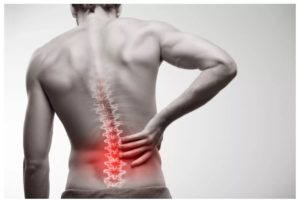

We can all agree that waking up with stiff back is not a great way to start your day. Morning back stiffness can stem from a large number of conditions. In an otherwise healthy individual, it can simply be the result of fluid accumulation in the spinal disks during the night. As you get out of bed, this fluid can result in temporary stiffness or pain in the back. This usually will subside soon after you get moving.
Preventing this type of morning stiffness can be as simple as changing your sleeping habits. We recommend attempting the following for a few nights:
- Sleep on your back instead of your stomach.
- Choose a pillow that aligns your back more effectively. Feather and memory-foam pillows help keep your neck and back lined up at night.
- Increase the length and quality of your sleep cycle. Not enough sleep increases the odds of soreness. If you are not getting enough sleep, discuss this with your physician.
Even if you are getting enough sleep and take care of your back and neck, there are some conditions that can still cause morning back stiffness. This can come as a result of chronic conditions such as rheumatoid arthritis, osteoarthritis or fibromyalgia. A recent injury can cause the stiffness you’re experiencing as well. If any of these apply to you, it is well worth the time and effort to see physical therapist who can, with a few sessions, treat your symptoms to decrease your discomfort.
There are a variety of effective treatments we use to treat for morning back stiffness. In the most extreme cases, we might recommend you see a physician.
If you experience moderate morning back soreness that does not improve after making some of the above changes, you may consider a PT assessment. A physical therapist will perform an evaluation to assess your mobility, function and condition of soft tissue to help determine the root cause of your symptoms. Based on your symptoms and your goals, we can develop an exercise program that will strengthen back and neck muscles, and increase flexibility and range of motion. There is no one-size-fits-all treatment for morning back stiffness. After this thorough initial evaluation, we will design a program that can help you get out of bed every morning with little to no pain, ready to face the day!
